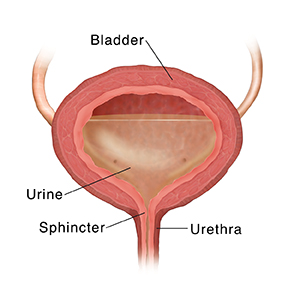Understanding Urodynamics Studies
Understanding Urodynamics Studies

Understanding the lower urinary tract
The lower part of the urinary tract has several parts.
The bladder stores urine until you’re ready to release it.
The urethra is the tube that carries urine from the bladder out of the body.
The sphincter is made up of muscles around the opening of the bladder. The sphincter muscles tighten to hold urine in the bladder. They relax to let urine flow. Signals from the brain tell the sphincter when to tighten and relax. These signals also tell the bladder when to contract to let urine flow out of the body.
Why you need a urodynamics study
This test may be ordered if you:
Are incontinent (leak urine)
Have a bladder that does not empty all the way.
Have symptoms such as the need to urinate often or a constant strong need to urinate
Have intermittent or weak urine stream
Have persistent urinary tract infections
Preparing for the study
Tell your doctor about any medicine you’re taking. Ask if you should stop them before the study.
Keep a diary of your bathroom habits. Do this for a few days before the study. This diary can be a helpful part of the evaluation.
Ask if you need to arrive for the study with a full bladder.
Updated:
September 10, 2017
Sources:
Winters, JC. Adult Urodynamics: American Urology Association/Society of Urodynamics, Female Pelvic Medicine and Urogenital Reconstruction Guideline. The Journal of Urology (2012); 188(6); pp. s2462-2472
Reviewed By:
Greenstein, Marc, DO,Hanrahan, John, MD,Image reviewed by StayWell medical illustration team.